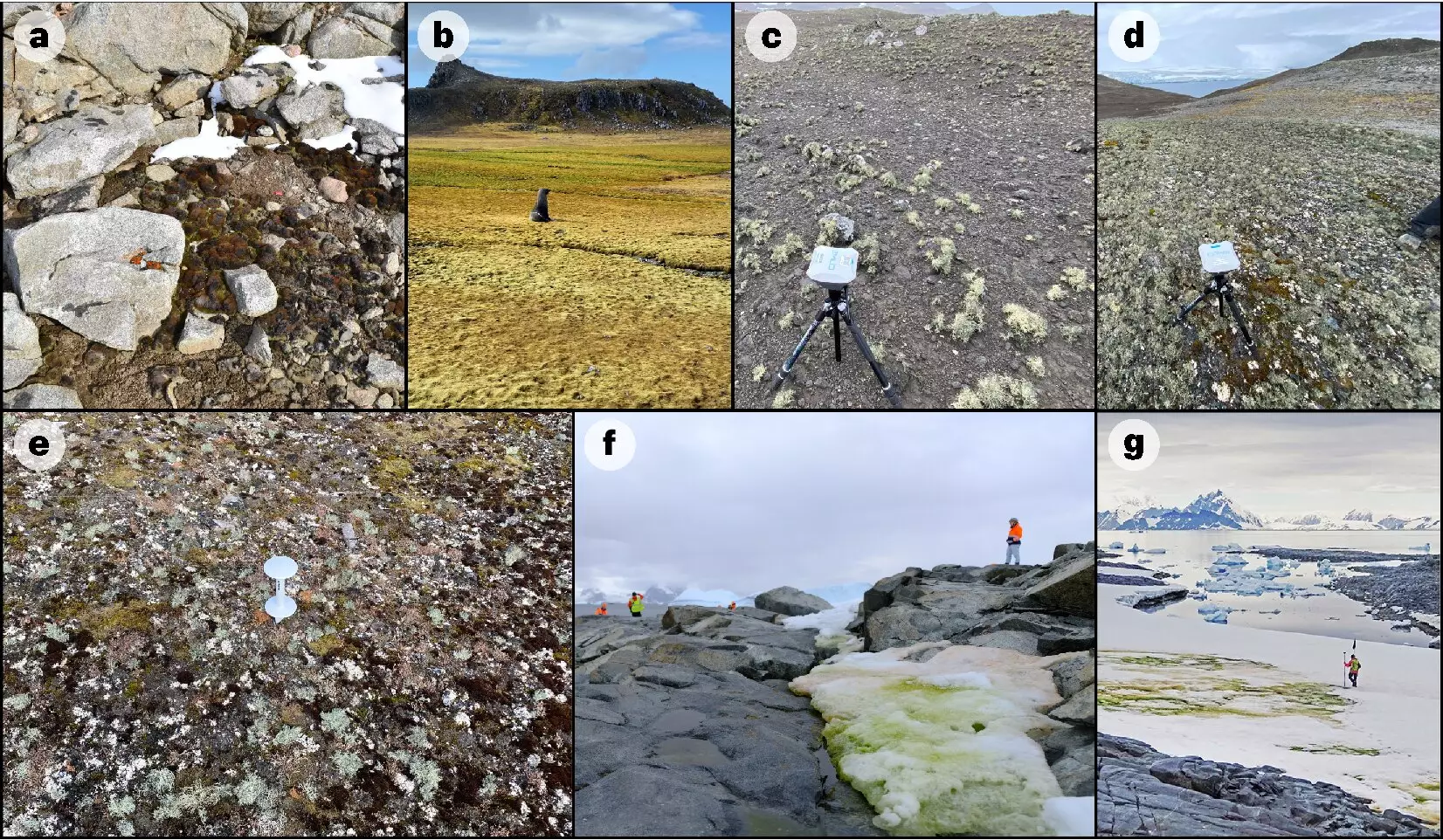In recent years, the scientific community has turned its focus towards the hidden realms of Antarctica, a continent characterized more by its icy expanses than its ecological diversity. However, groundbreaking research has recently emerged, revealing the first comprehensive map of plant life across this frigid landscape. Published in the esteemed journal Nature Geoscience, this study uncovers previously uncharted zones of vegetation, setting the stage for critical conservation efforts amid a backdrop of climate change.
The core of this research lies within the fusion of advanced satellite technology and extensive ground-based fieldwork. A European Space Agency satellite conducted a sweeping survey of mosses, lichens, and algae, which resulted in the identification of approximately 45 square kilometers of vegetation. To put this into perspective, this area is about three times that of Lake Windermere, one of the largest lakes in the United Kingdom. This dual approach—leveraging both satellite data and on-the-ground measurements across several summer seasons—enables researchers to create a reliable baseline for monitoring changes in plant life due to global warming.
Hailing from a collaboration involving prestigious institutions such as the University of Edinburgh, the Norwegian Institute for Nature Research, the British Antarctic Survey, and the Scottish Association for Marine Science, the findings reveal that over 80% of this greenery is concentrated within the Antarctic Peninsula region and its neighboring islands. This geographic specificity highlights the vital and vulnerable nature of these ecological pockets, which are increasingly threatened by climate fluctuations.
Understanding Vegetation Distribution
Despite this promising glimpse into Antarctic vegetation’s presence, the new research underscores a stark reality: these growths represent only 0.12% of Antarctica’s total ice-free landscape. The challenge posed by this statistic is enormous, prompting calls for more effective monitoring and conservatory practices coupled with an overhaul of the existing Antarctic Specially Protected Area (ASPA) system. The inadequacies of this system in safeguarding vegetative zones are concerning, especially given the crucial roles played by mosses and lichens in carbon and nutrient cycling in this fragile ecosystem.
These resilient organisms endure some of the harshest environmental conditions imaginable, and their survival is closely intertwined with regional climate changes. As studies have indicated, they serve as sensitive indicators of ecological shifts, reinforcing their value in understanding climate responses not just in Antarctica, but in similarly delicate ecosystems worldwide, such as the Arctic.
“This continent-wide map provides essential insights into vegetation distribution in otherwise remote areas,” asserts Charlotte Walshaw, a lead researcher on the project. The knowledge garnered from this study could guide future conservation efforts, pinpointing specific areas requiring immediate attention. Furthermore, Dr. Claudia Colesie emphasizes the unique resilience of Antarctic flora, indicating that understanding their locations enhances the potential for targeted conservation strategies to ensure their preservation in a warming world.
The techniques employed in this study not only open a window into the existing state of Antarctic vegetation but also pave the way for continued monitoring of changing patterns over time. Dr. Andrew Gray notes that remote sensing technologies represent a “low impact” means to observe the shifts within these fragile ecosystems. This is particularly crucial, as boots-on-the-ground research in Antarctica remains logistically challenging and often disruptive.
The Future of Antarctic Conservation
As climate change continues to pose unprecedented threats to ecosystems globally, the importance of this research cannot be overstated. The findings lead to a broader dialogue around conservation efforts in Antarctica and beyond as the scientific community grapples with maintaining the delicate balance of these ecosystems. Understanding where and how vegetation exists in Antarctica not only enriches our knowledge but also empowers conservationists to act effectively.
The newly unveiled contours of vegetation across Antarctica signify a pivotal moment for environmental science. With climate change looming large, harnessing technologies that elucidate and monitor these changes will be essential in mapping a sustainable future for the continent. By safeguarding the resilient flora of Antarctica, we ultimately protect invaluable insights into our planet’s environmental health.


Leave a Reply